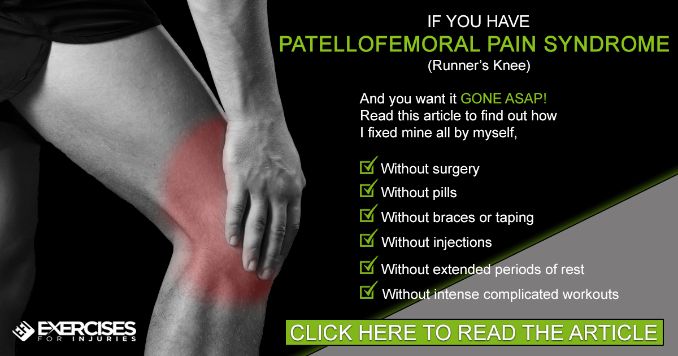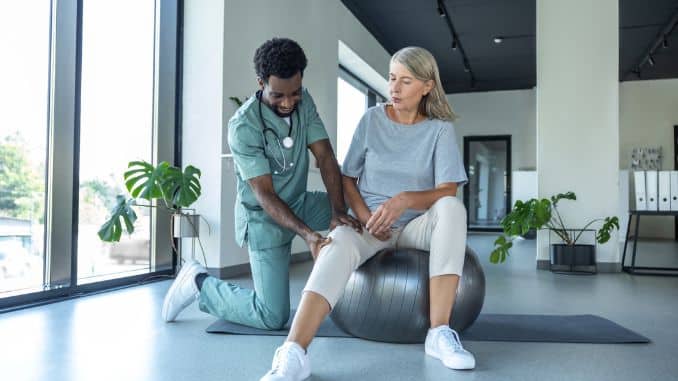
If you’re dealing with knee pain [1], recovering from surgery, managing arthritis, or looking to improve performance in the gym, a structured knee conditioning program is key. Strong and flexible muscles around the knee joint—like your hamstrings [2] quads, glutes, and calves—help support stability, mobility, and pain prevention.
Adding the best knee strengthening exercises to your plan ensures these muscles are activated and supported effectively.
Whether you’re under the care of a physical therapist or exploring safe and effective home rehab routines, these best knee strengthening exercises target your thigh muscles, improve range of motion, and reduce the risk of knee injuries.
Let’s dive into a comprehensive list of exercises designed to prevent knee pain, strengthen the surrounding muscles, and rebuild stability.
1. Groin Stretch (Standing & Floor Variation)
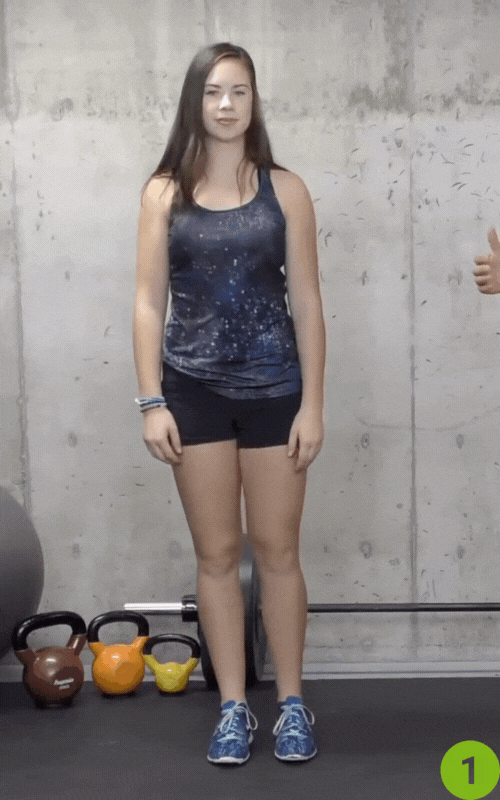
Targets: Hip flexors, inner thigh, and knee stability
This dynamic stretch improves hip flexibility and gently activates muscles around the knee joint
- Begin in an upright standing position with your feet hip-width apart.
- Maintain good alignment with your head, shoulders, hips, and legs.
- Place your hands at your side. Engage your core muscles.
- Shift your body weight to your left leg and lift your right knee up, then open it out to the side and return to the starting position.
- Repeat the movement on the opposite leg.
- Complete 10 repetitions on each side.
To modify:
- Place one hand on a wall and mimic the same leg motion
- Lie flat on the floor and mimic the same leg motion with your leg slightly bent.
2. A Partner Hamstring Hold
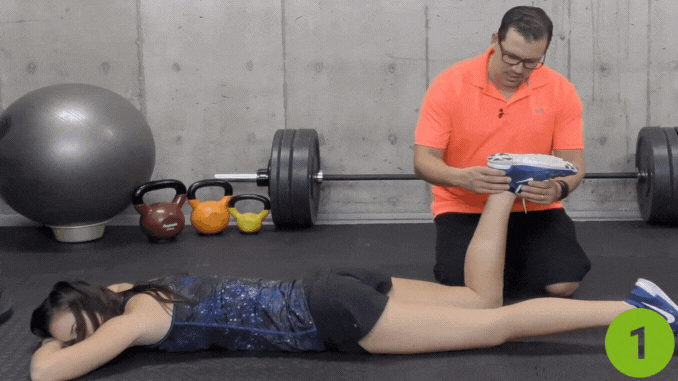
This knee strengthening exercise improves endurance and support behind the affected knee, especially helpful after ACL surgery
- Lie face down on the floor with your legs extended.
- Bend your elbows and place your hand at face level.
- Engage your core muscles. Bend one leg (e.g., right leg) at 45° or 90°.
- A partner applies gentle resistance as you contract the hamstrings.
- Hold the position for a couple of seconds. Relax and repeat the movement on the opposite leg.
No partner? Use a resistance band.
3. Hip Abductor with or without Band
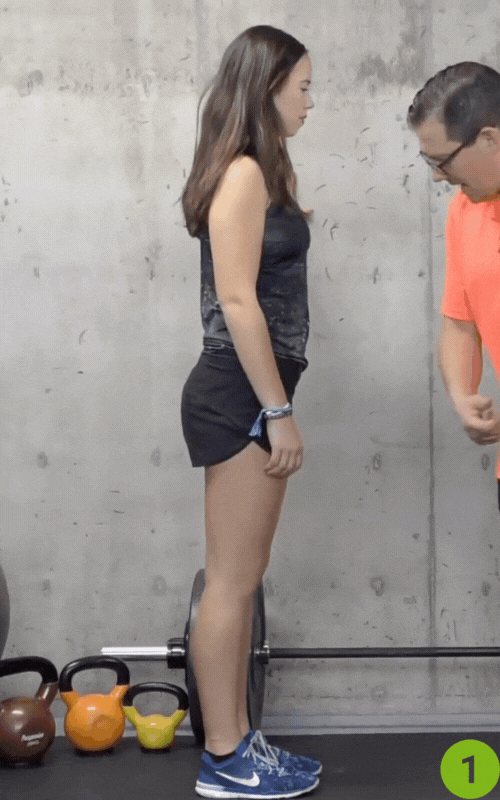
Targets: Outer hips, glutes, pelvis stability
This movement helps stabilize your knee straight position and improves lateral strength for activities like walking and running.
- Begin in an upright standing position beside a wall with your feet hip-width apart.
- Maintaining good alignment with your head, shoulders, hips, and legs.
- Press one hand on the wall. Engage your core muscles.
- Lift one leg to the side and lower it down.
- Repeat the movement on the opposite side.
- Complete 10 repetitions on each side.
4. Static Lunge
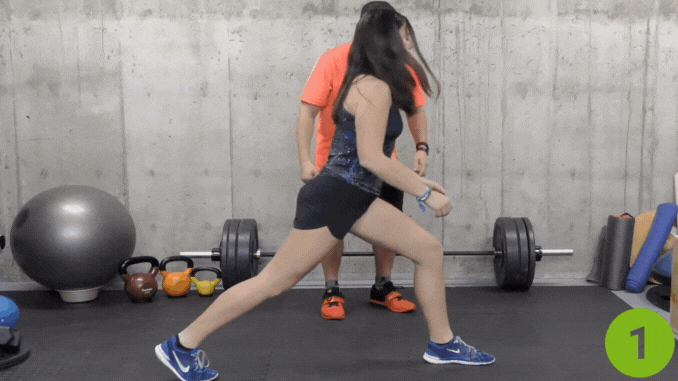
Targets: Quads, glutes, hamstrings.
This movement activates muscles critical for knee rehabilitation and everyday movement.
- Begin in an upright standing position with your feet hip-width apart.
- Maintain good alignment with your head, shoulders, hips, and legs.
- Take a big step back with one leg.
- Engage your core muscles, then lower your back leg to move into a lunge position, maintaining both knees at 90° angles.
- Hold the position for a couple of seconds and repeat the movement on the opposite side.
5. Single-Leg Half Squat
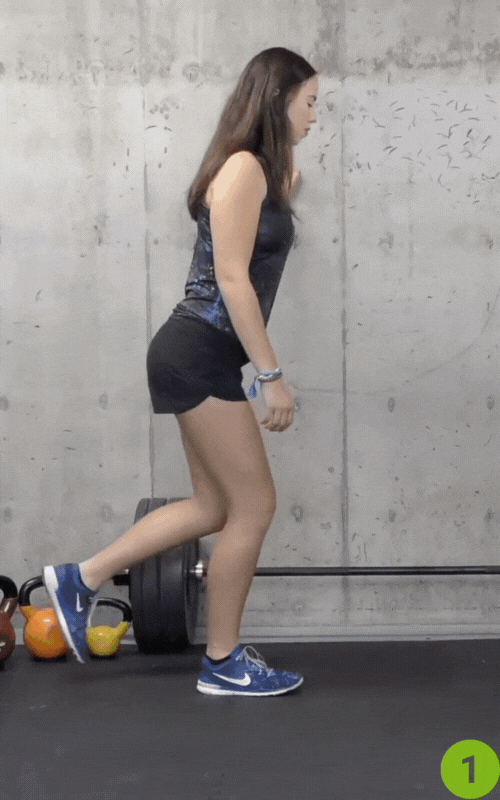
Targets: Glutes, quads, hamstrings
Ideal for retraining knee stability and building strength on each side individually
- Begin in an upright standing position beside a wall with your feet hip-width apart.
- Press your hand on the wall. Engage your core muscles.
- Bend your left knee, bringing all your weight into your right leg.
- Then, slowly bend your right knee to lower your upper body into a squat position.
- Return to the starting position and repeat the movement on the other side.
- Complete 5 repetitions on each side.
6. Hip Abductors with Resistance Band
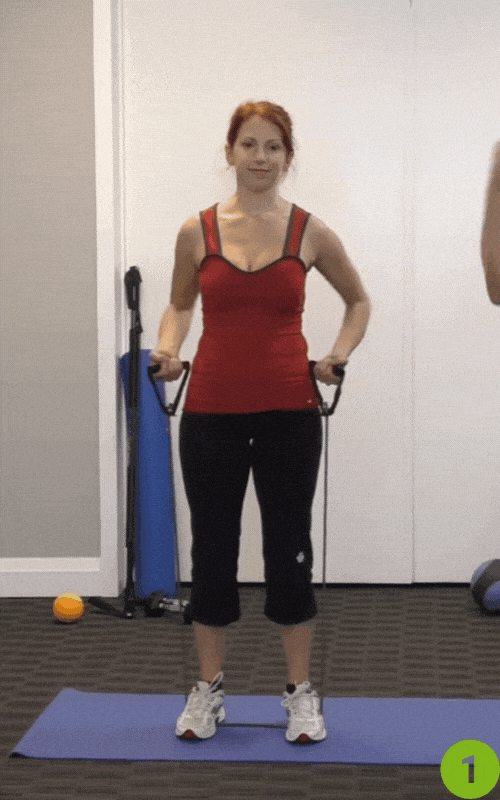
Targets: Outer hips, quads
This exercise specifically targets the outer hip muscles and helps prevent knee pain by promoting better alignment.
- Begin in an upright standing position with your feet hip-width apart.
- Step on a resistance band and hold the ends of the band by your hips.
- Maintain good alignment with your head, shoulders, hips, and legs.
- Engage your core muscles. Then, lift your legs to the side and return to the starting position.
- Repeat the movement on the opposite leg. Complete 10 repetitions on each side.
7. Calf Raises with Band
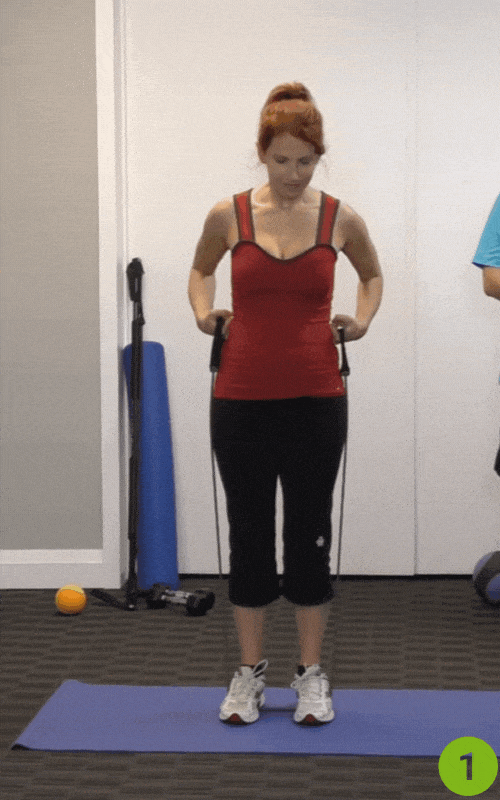
Targets: Calf muscles, ankle support
Calf strength helps stabilize your knees, slightly bent during movement
- Begin in an upright standing position with your feet hip-width apart.
- Step on a resistance band and hold the ends of the band by your hips.
- Maintain good alignment with your head, shoulders, hips, and legs. Engage your core muscles.
- Then, lift both heels off the floor and hold the position for a couple of seconds.
- Lower your heels to the floor and repeat the movement for 10 repetitions.
8. Half Squat with Band
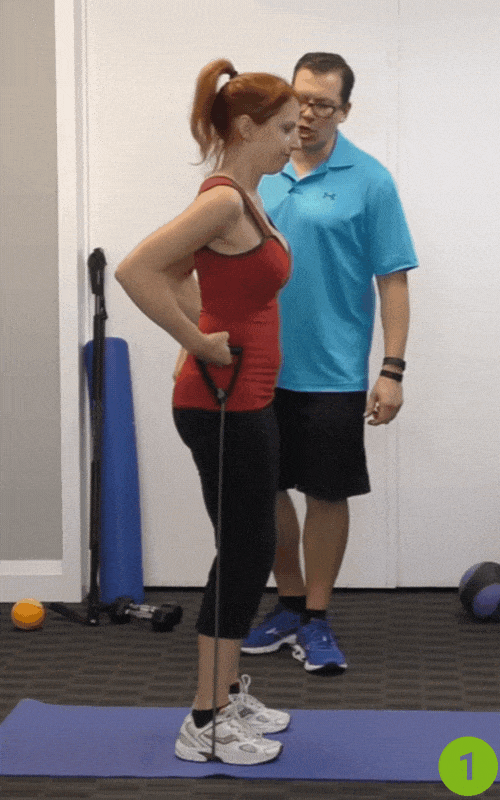
Targets: Hips, hamstrings, knees
This supports proper knee anatomy and tracking during daily movement.
- Begin in an upright standing position with your feet hip-width apart.
- Step on a resistance band and hold the ends of the band by your hips.
- Maintain good alignment with your head, shoulders, hips, and legs.
- Engage your core muscles. Bend your knees to lower your body into a squat position.
- Return to the starting position and repeat the movement with 10 repetitions.
9. Glute Bridge
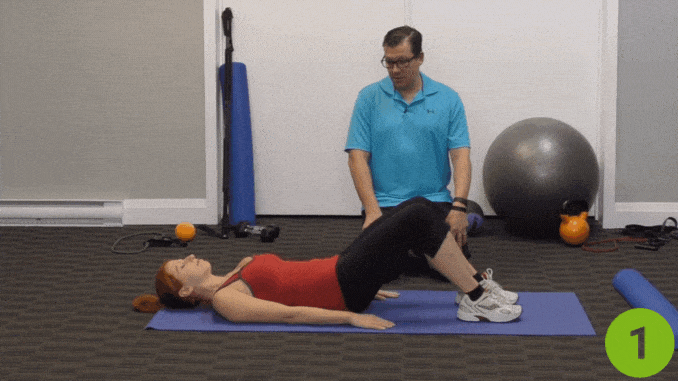
Targets: Glutes, hamstrings, lower back
Strengthens the posterior chain, easing strain on the patellar tendon and helping with runner’s knee.
- Lie on your back with your knees bent and your feet flat on the floor, relaxing your upper body.
- Place your arms at your side.
- Contract your abdominal area, then push from your heels to lift your hips.
- Maintain good alignment with your head, shoulders, hips, and knees.
- Hold this position for several deep belly breaths, in through your nose and out through your mouth.
- Relax and return to the starting position.
10. Seated Leg Raises on the Floor
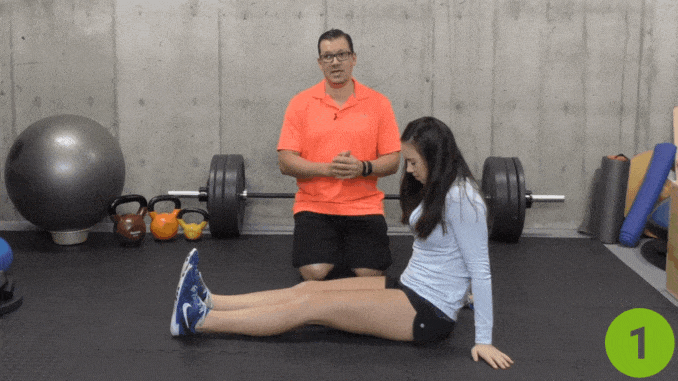
- Sit on the floor with your hands at your sides and your toes pointing straight up.
- Relax and contract your quad as you lift one leg a few inches off the ground slowly, and then lower it down.
If you are not able to lift your leg off the ground, that’s fine. Contract the quad and lift the leg a little bit or just a portion of the weight of your leg.
- Perform one set of 5 reps in a smooth, controlled movement, with a nice contraction.
- Hold the top position for a few seconds.
- Intensity is light with the purpose of working on the activation, endurance and strengthening of the muscles in the quadriceps and hips.
11. Seated Leg Raises Using a Chair
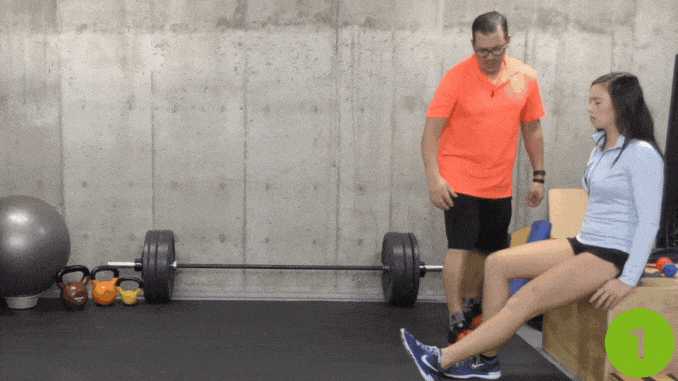
- Sit on a chair. Contract your quad and extend your leg out.
- Slowly lift your leg up.
- Ideally, your leg should be parallel with your thigh.
- Slowly bring your leg down to the starting position.
- Perform one set of 5 reps in a smooth, controlled movement, with a good contraction at the top.
- Intensity is light with the purpose of working on the activation, endurance and strength of the muscles in the quad and hips areas.
12. Half Squat
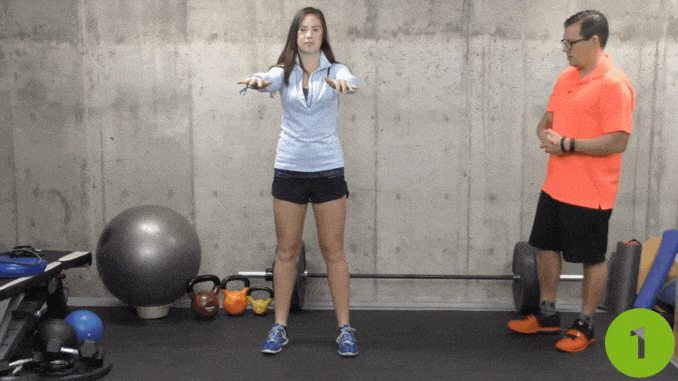
- Begin by standing upright. Separate your feet to approximately shoulder-width apart, with your toes slightly out to the side.
- Place your hands out front, bring your hips back, and squat down.
- Raise your body up slowly as you return to the starting position.
- Squat down to whatever level you can.
- Perform one set of 5 reps in a smooth, controlled movement, with a good stop at the bottom.
- Intensity is light to moderate, depending on how strong you are in your knees and hips.
- This exercise helps in strengthening the muscles around your hips and knees.
- Also, it encourages good tracking of your legs for good movement of the knee over the foot and hip alignment.
13. Sits to Stand
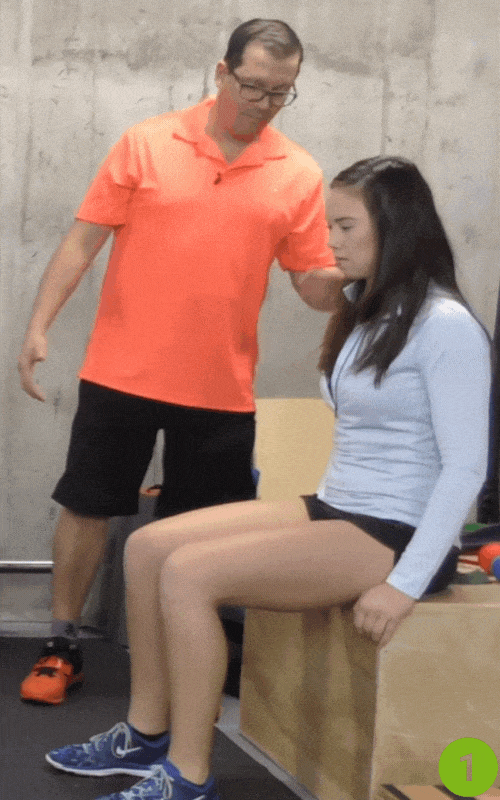
- Sit upright on a chair or something firm with your hands to the side.
- Move from a sitting position to a standing position, and then back to a sitting position.
- You can use your hands to guide you when doing this exercise.
14. Knee Abductor with Tubing
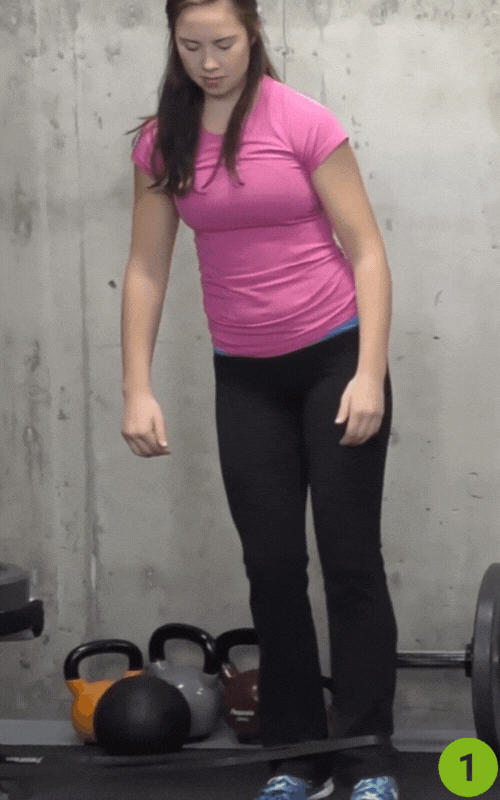
Targets: Outer hip, lateral thigh
How to Do It:
- Stand with tubing looped around your left ankle and attached to something stable.
- Slowly raise the left foot, keeping your pelvis stable.
- Lower, then switch legs.
- Supports flexible muscles in the hip, boosting control in the affected leg
15. Hip Extensor Strengthening
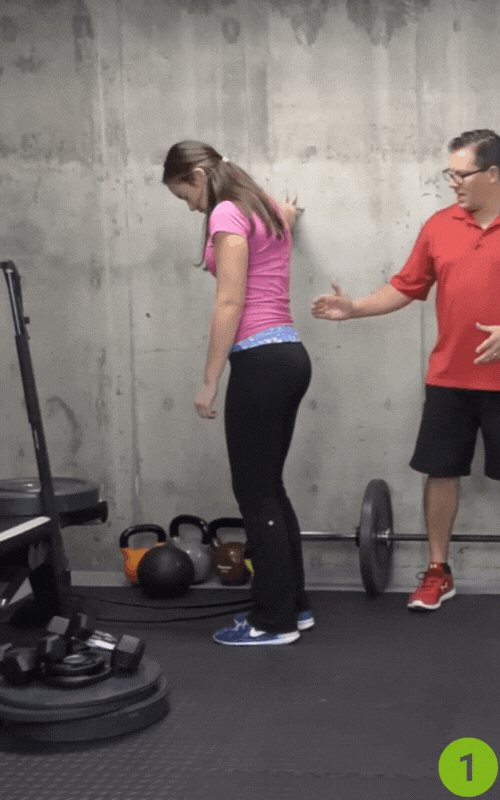
Targets: Glutes, hamstrings
How to Do It:
- Use tubing looped on your right ankle, push right leg straight back ~30°.
- Pause, return.
- Great for building posterior strength—critical to prevent injury during lifts or sudden motion
16. Monster Walks with Band
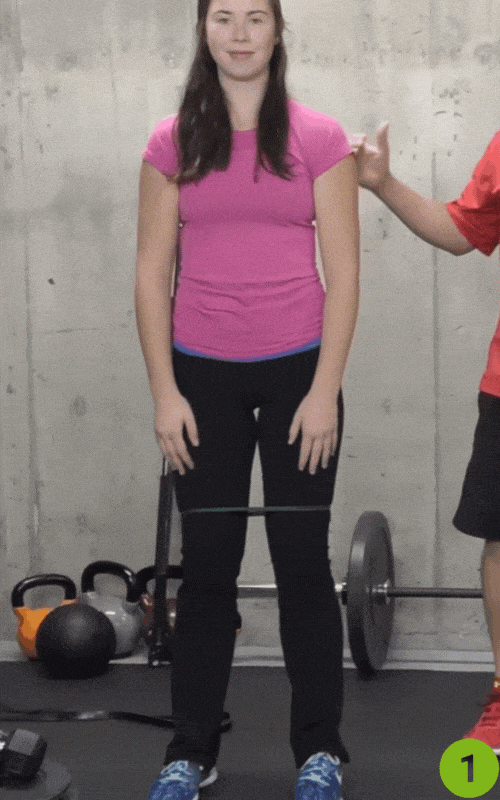
Targets: Outer hips (concentric, eccentric & isometric)
How to Do It:
- With a band above knees, squat slightly.
- Step sideways, feet hip width apart, keeping tension.
- Trains the hip width stabilizers and controls knee tracking
According to Dr. Kevin Wilk, DPT Associate Clinical Director, Champion Sports Medicine | Adjunct Professor, Duke University Medical Center “One of the most important aspects of knee rehabilitation is restoring quadriceps strength and neuromuscular control. The vastus medialis oblique (VMO) must fire correctly to stabilize the patella and reduce joint stress. I always recommend incorporating straight leg raises and closed-chain exercises like mini squats, done slowly and with control. These help build strength while protecting the joint.”
Final Thoughts: Strong Knees, Strong You
These best knee strengthening exercises form a powerful foundation to rebuild strength and confidence in your knees—no matter your age, fitness level, or injury history. Whether you’re easing into a knee rehabilitation plan or preparing to lift heavier at the gym, consistency and proper form will help you move freely again.
Stick with the best knee strengthening exercises to stay mobile, prevent injury, and recover faster.
Remember, if you’re dealing with existing knee pain, consult a physical therapist before beginning new routines.
Don’t let knee pain hold you back. Check out our Patellofemoral Syndrome Solution and discover expert-backed strategies to relieve pain, improve mobility, and get back to doing what you love.
FAQ’s
1. Can knee strengthening exercises help relieve existing knee pain?
Yes—absolutely. Targeted strengthening of the quads, hamstrings, and glutes improves support around the knee joint, which can reduce pain, improve range of motion, and help prevent further damage. Always perform exercises slowly, keep your upper body relaxed, and listen to your body.
2. How often should I do knee strengthening exercises?
Most physical therapists recommend 2 to 4 times per week, depending on your condition and fitness level. Recovery is just as important as the exercise itself, especially if you’re managing knee injuries or recovering post-surgery. Alternate sides, switch legs, and avoid overloading the affected leg.
3. Are these exercises safe for arthritis or after surgery (like ACL reconstruction)?
Yes—with modifications. Gentle, controlled movements like seated leg raises, hamstring curls, and sits to stand are excellent for arthritis. Post-surgery, follow a structured knee rehabilitation plan guided by a physical therapist, starting with isometric and closed-chain exercises before progressing to dynamic strength work.
4. Should I feel soreness or pain during these exercises?
Some mild muscle soreness is normal, especially when beginning a knee conditioning program, but sharp or sudden knee pain is a red flag. Use proper form, ensure knees are aligned with toes, and avoid overextending. Pain during movements like slowly lift or bent knee positions suggests the need for rest or professional evaluation.

